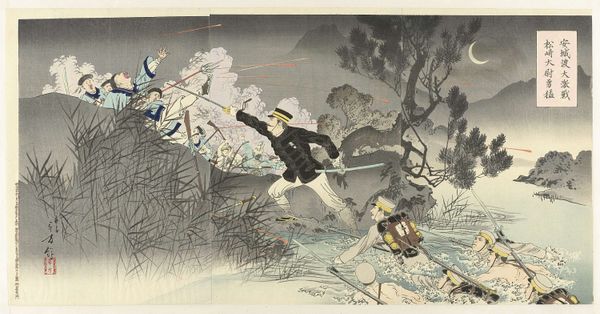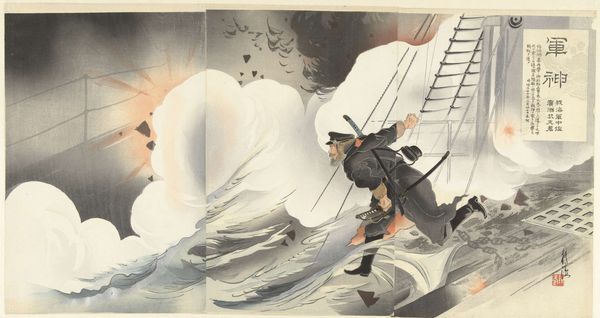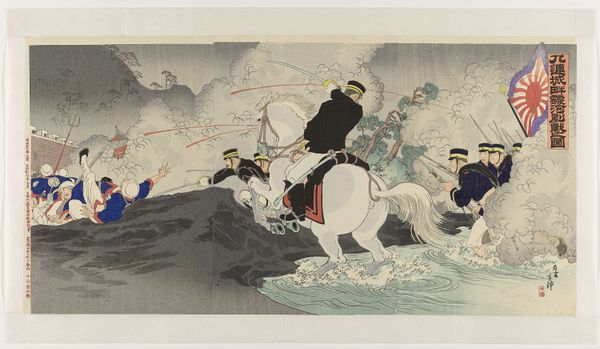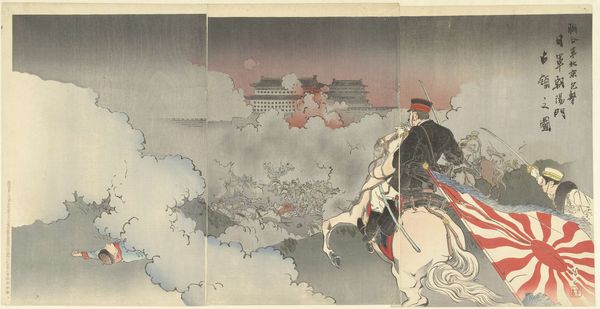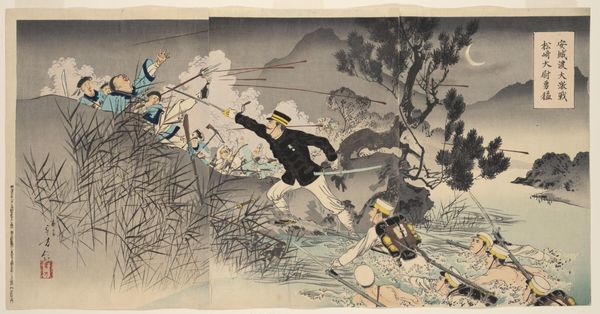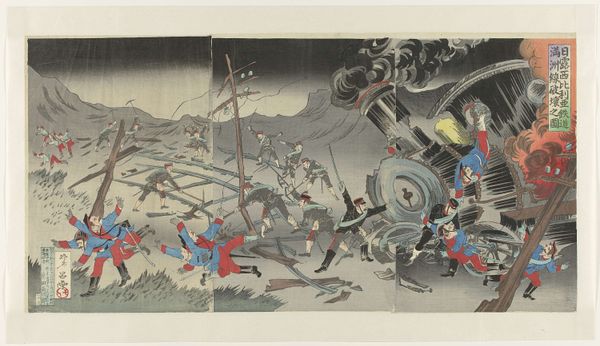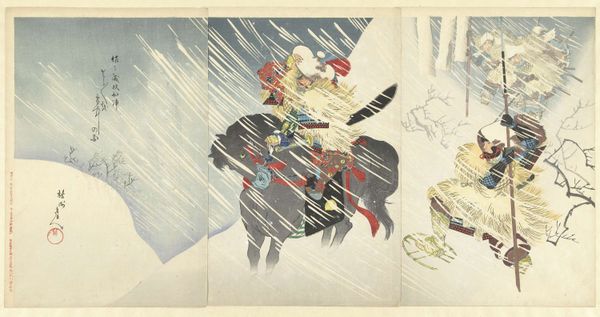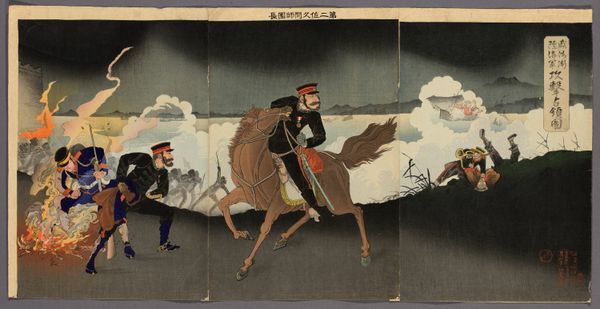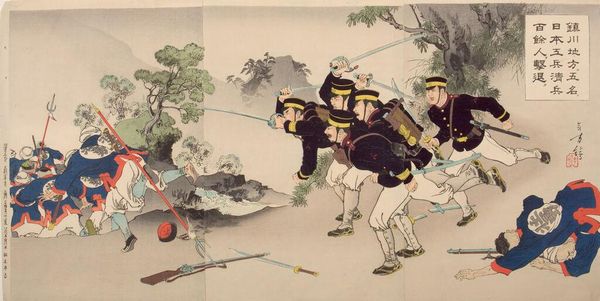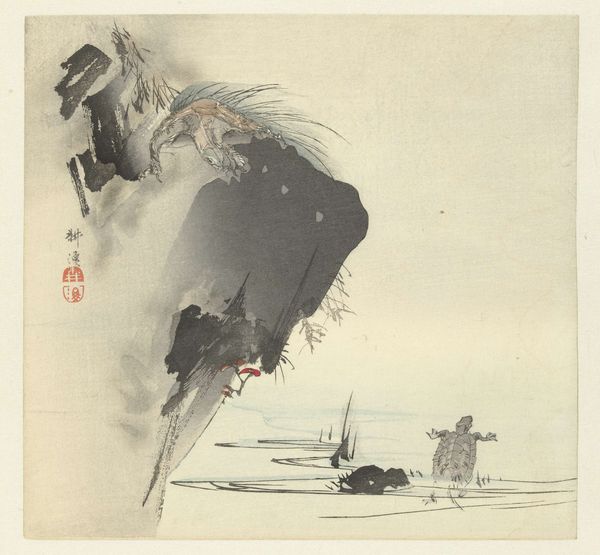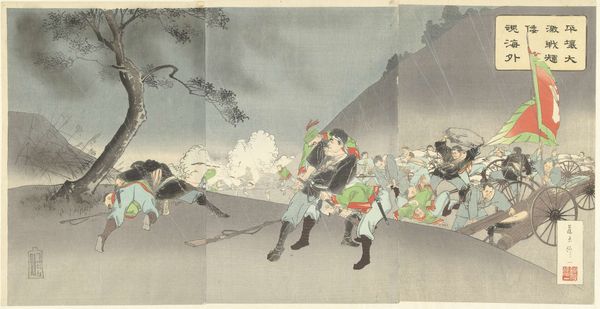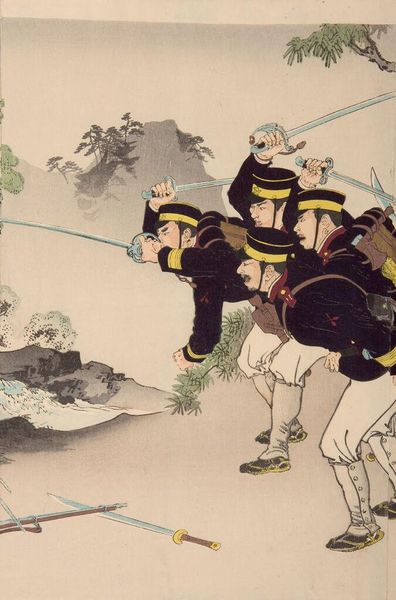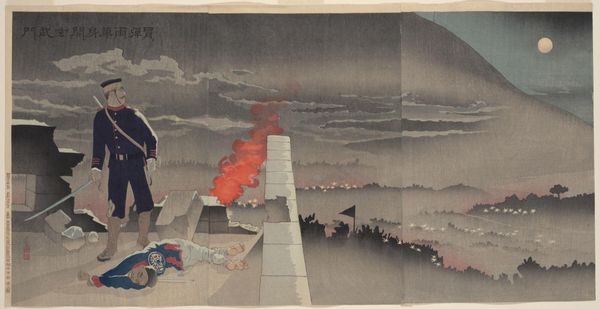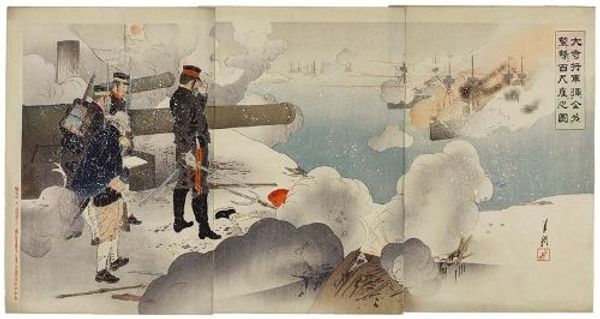
Onoguchi, de dood trotserend, om de poort van het vijandelijke fort op te blazen. 1894
0:00
0:00
Dimensions: height 370 mm, width 718 mm
Copyright: Rijks Museum: Open Domain
Curator: Ogata Gekko's 1894 color woodblock print, "Onoguchi, de dood trotserend, om de poort van het vijandelijke fort op te blazen" offers a glimpse into a specific moment in military history, currently residing here at the Rijksmuseum. My immediate impression is of explosive action framed within delicate, almost dreamlike pastels. Editor: The first thing that strikes me is that paradox – this horrific depiction of war, softened by the airy, pastel-washed rendering. It immediately provokes questions of the artist's intent, of the ways in which even violent events are framed, particularly through state narratives and image production. Curator: It's important to remember that this print was produced during the First Sino-Japanese War. Gekko, like many artists at the time, created works that were, in part, a reflection of Japan's rising military power and nationalistic fervor. We see that, certainly, in the glorification of this soldier's apparent self-sacrifice. Editor: Exactly. But the choice of Ukiyo-e, typically associated with the depiction of idealized beauty and pleasure, to depict such a scene creates an interesting tension. Is it romanticizing warfare? Sanitizing the violence through aestheticization? I think it's vital to interrogate what stories are being told, and more importantly, *who* is telling them and *why*. Curator: We can analyze this in the context of earlier war prints. Gekko moves away from graphic depictions of battle. Instead, the emphasis here feels almost...impressionistic. The lines representing gunfire almost become abstract shapes floating across the picture plane. Editor: That abstraction worries me because it enables distance. It flattens the complexities of war, and erases the brutal realities for the people on the ground – often the marginalized, the colonized. It pushes an imperial agenda, not as reportage, but as propaganda. Curator: Yet, there’s an undeniable human element here, as we confront themes of sacrifice and unwavering loyalty. But what if Gekko challenges viewers to consider the broader consequences and moral complexities of war? We, as observers, bear witness to the print’s compelling visuals and potent historical implications, questioning preconceived notions. Editor: It's not necessarily a question of intent but impact. We are not simply neutral observers of war. Our understanding is actively being constructed and distributed through these kinds of visual narratives. Analyzing how this specific print contributed to a particular sociopolitical climate then is absolutely crucial. It really provides a complex snapshot into a precise cultural perspective from the past. Curator: Precisely, and appreciating those layers is what breathes relevance into a historical artwork such as this, keeping the conversation alive and reflective.
Comments
No comments
Be the first to comment and join the conversation on the ultimate creative platform.
